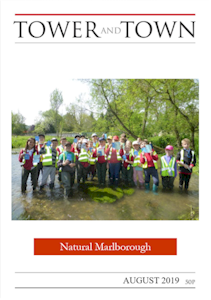

Tower and Town, August 2019 (view the full edition) (view the full edition)Clergy LetterTo sit alone in a country church is companionable solitude: a volume of silence. I'm at St Michael's, Tidcombe, prior to taking a service for its rededication next weekend: writing my sermon in the church seemed appropriate and ought, I thought, allow the place to permeate my words a little. Major repairs to these lively stones were being undertaken, following a heroic fundraising effort - then, as happens in so many similar cases, thieves arrived by night and used the scaffolding to remove lead from the roof, rolling it up in heavy carpets, carting it away through the graveyard. Such ruinous seasons of metal theft - sometimes being inflicted multiple times on the same church - are almost beyond endurance for those already shouldering the massive cost of our built heritage. The Church of England looks after a startling forty-five percent of all Grade I listed buildings in the country, and each one has to be sustained by voluntary effort - often by tiny communities, as in Tidcombe. So it's an amazing, praiseworthy feat that the majority of England's 15,700 parish churches are in such good shape and a defiant sign of life that St Michael's has a gleaming new roof (this time, in terne-coated stainless steel). Church buildings run by subtle semiotics: they are always signifying something just out of sight. 'Underneath', reads a tombstone - the word embellished for emphasis - 'are deposited the mortal remains of Edward Tanner, many years an inhabitant of this parish'. Rustily caged, an enclosure for creatures long departed, the monument points to what is beyond and invites you to imagine it, grisly or glorious. Because they express investment in what cannot be seen (barely even articulated), these emblems are potent beyond belief. We are unable to grasp the thing signified, so the physical sign becomes a vital proxy. This instinct can, of course, be baneful (as any parish priest knows) but to suppress or ignore it is folly, for it can also point us to paradise. The font in Tidcombe church is a fine example. Perhaps because it doesn't belong to anyone in particular - but thousands of lives, fondly or briskly christened - its personal significance is both diffused and amplified. In buttery limestone, faintly striated, it is a deep and beautiful thing - thought to be Saxon and to date from around 850AD. Being so soaked in association - with bawling, aspirant life, and the Christ of this place - the St Michael's font fairly pulses. We can no more evacuate divine meaning from the material world as live in the clouds. This is why we shall continue to replace the church roof and thermometer our appeals to heaven. My sermon complete, I sketch the font in 6B, enjoy a silent sandwich, then leave. Bishop Andrew |